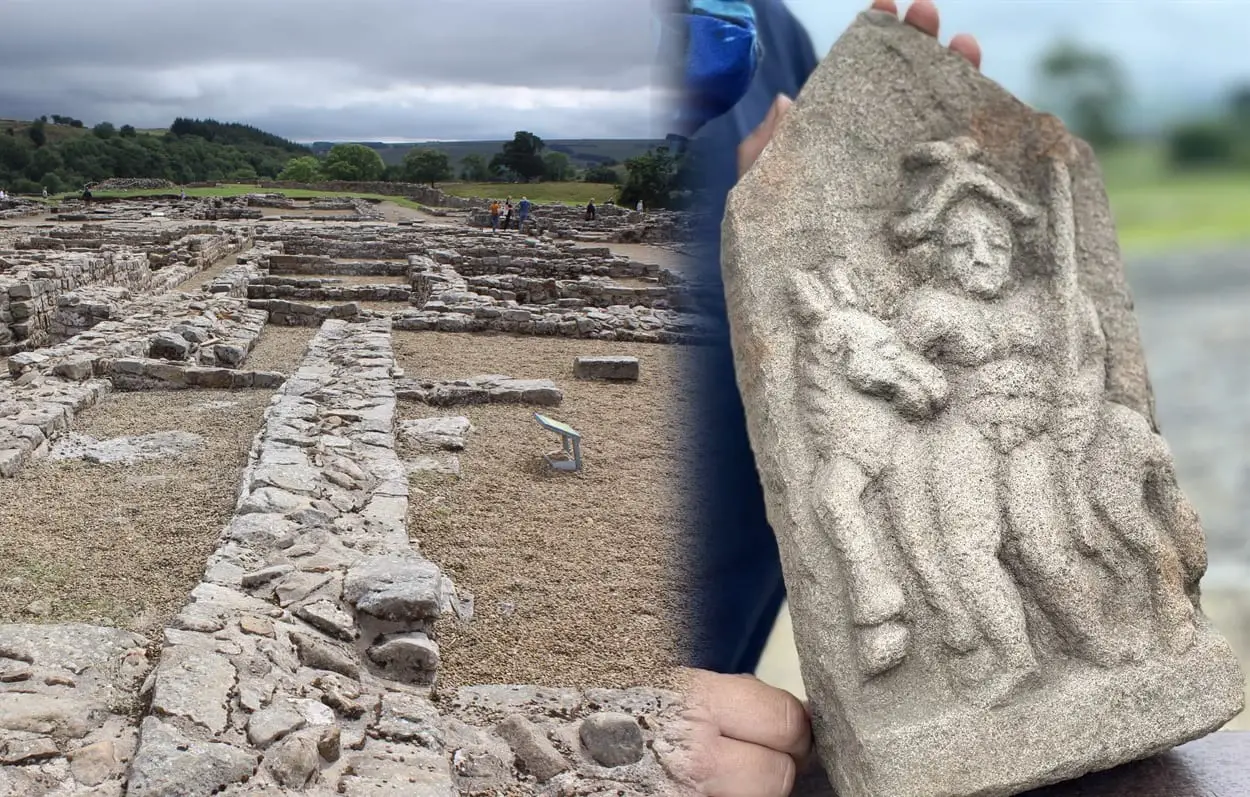Excavations at the Roman fort of Vindolanda in northern England have uncovered a carved stone relief depicting a horseman or Roman deity.
Vindolanda (translated as “white field” or “white moor”) was a Roman auxiliary fort (castrum), located on the fringes of the Roman Empire in the province of Britannia.
Its position guarded a major Roman highway called the Stanegate just south of Hadrian’s Wall, that was garrisoned by infantry or cavalry auxilia, and later in the early third century, the Cohors IV Gallorum equitata (also known as the Fourth Cohort of Gauls).
The relief was discovered during excavations by volunteers led by the Vindolanda Trust in May 2021, which depicts a naked male figure holding a spear in front of a horse or donkey.
Two of the volunteers, Richie Milor and David Goldwater were excavating a flagged floor inside a 4th century building near one of the forts Cavalry buildings, when they uncovered the sandstone relief that measures 160mm by 315mm.

David Goldwater said: “I saw one of the legs of the horse first and then the pointed top of the relief.” With Richie Milor adding: “We are just absolutely elated, very proud to be part of this discovery, it was actually very emotional. Whether you find something or not we love coming to this site, playing our small part in the research that takes place, but finding this made it a very special day indeed.”
Researchers from the team that oversees the excavations are now trying to piece together the clues to establish who the carving may represent.
Site archaeologist Marta Alberti commented: “The nakedness of the man means he is probably a god, rather than a mere cavalryman, he is also carrying a spear in his left arm, a common attribute of the god of War – Mars, however when you look at his head, the two almost circular features could be identified as wings: a common attribute of Mercury – god of travel. Horses and donkeys are also often associated with Mercury as a protector of travellers”.
Header Image Credit: Vindolanda Trust





